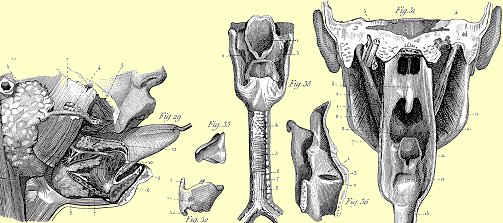Artificial Hearts, Minds, and Voices
Today, artificial hearts, minds, and voices. The University of Houston's College of Engineering presents this series about the machines that make our civilization run, and the people whose ingenuity created them.
The wonderful seventeenth century gave us the new idea that we could observe nature, and use what we saw to create a science that'd help us to build machines. With that new observational science, we expected to begin working miracles. A recent book by Hankins and Silverman shows just how far that went.
One idea had hovered over machine-making ever since ancient times. If we could make machines, couldn't we also replicate living creatures. The Egyptians did remarkable things with model birds. The Greeks made statues with talking heads. (Of course, that turned out to be trickery with hidden speaking tubes.)
Now, in the mid 1600s, the potential for machines was opening up before us. Interest in replicating life was (dare I say) re-animated. Naturally, the most interesting life-form was the human being. And the most obvious mechanical function had to be eating and elimination. That did, indeed, attract attention. So did such sensory functions as sight and hearing. But, to make a machine that would pass for human, we needed something more external.
So speech was the function we first tried to replicate. One of my favorite people from that age, John Wilkins, was into everything from medicine to space travel. He suggested that we might assemble sounds from nature. Quenching a hot rod in water made the Zee sound; plucking a string made the NG sound, and so forth.
In the late sixteen hundreds, Robert Hooke found that he could stroke the teeth of rapidly spinning brass wheels and create certain sounds of speech. In that, he was already on the road to creating Edison's phonograph. By then it was clear that we could replicate vowels by bowing various strings in various ways. But Hooke's spinning wheels could also create many of the consonants that'd so concerned Wilkins.
And here we find metaphor playing its inevitable technological role. For voice and heart have always been linked in our minds. We speak from the heart. Good words are heartening, and so forth. While Wilkins was asking how to create speech, his friend William Harvey was explaining how blood moved through our bodies. The same scientists who were trying to replicate speech also struggled to build models of the human heart and blood flow.
By the eighteenth century, we had a dizzying array of moving models made for wealthy salons -- chirping birds and harpsichord-playing ladies. And, in our time, every child could have a Chatty Cathy doll. Yet, and this is the oddest part, we held off even talking about replicating the most essential human function.
Not until Mary Shelley wrote Frankenstein, and Charles Babbage conceived the programmable computer did we seriously consider replicating human thought. We've taken that idea very far, very fast. By now, we've built a machine that can beat a grand master at chess. At the same time, we have yet to build one that will speak to me, in your voice.
I'm John Lienhard, at the University of Houston, where we're interested in the way inventive minds work.
(Theme music)
Hankins, T. L., and Silverman, R. J., Instruments and the Imagination. Princeton, NJ: Princeton University Press, 1995 (see especially, Chapter 8).
I am grateful to Drexel Turner, UH Architecture Dept., for suggesting the Hankins and Silverman source to me.


Nineteenth-century images of the mechanics of speech